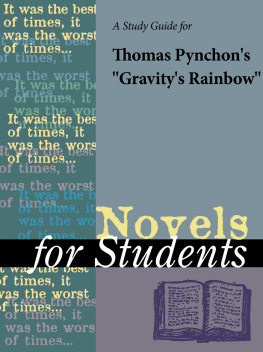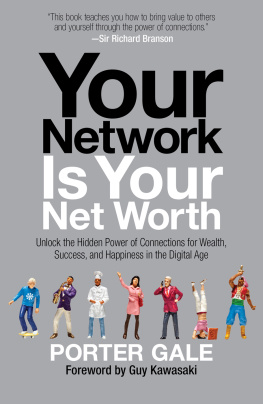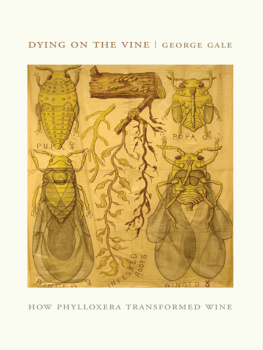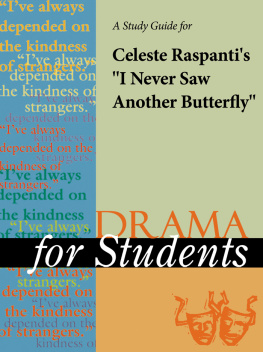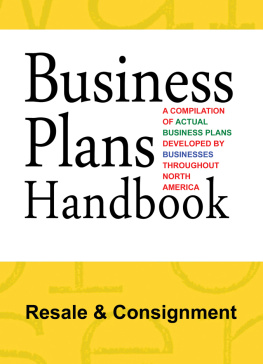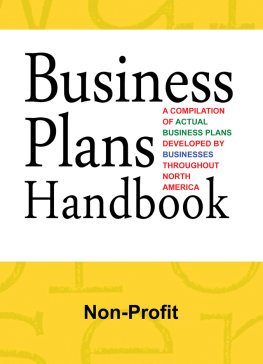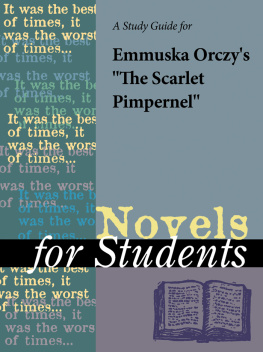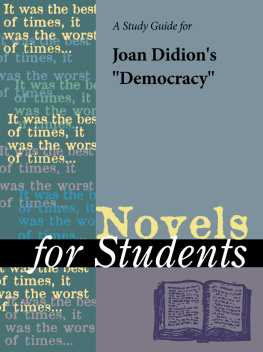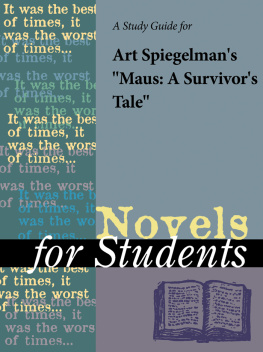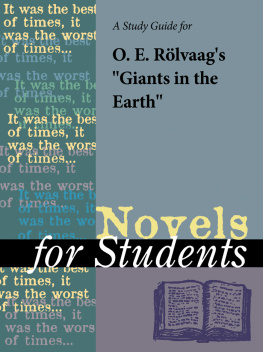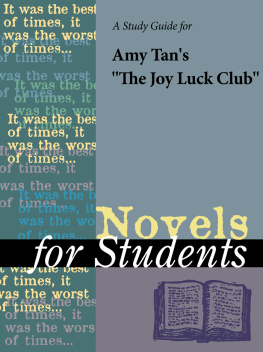TABLE OF CONTENTS
Guide
Novels for Students, Volume 23
Project Editor: Sara Constantakis
Editorial: Anne Marie Hacht, Ira Mark Milne
Rights Acquisition and Management: Jacqueline Key, Shalice Shah-Caldwell, Timothy Sisler
Manufacturing: Drew Kalasky
Imaging: Leitha Etheridge-Sims, Lezlie Light, Mike Logusz
Product Design: Pamela A. E. Galbreath
Vendor Administration: Civie Green
Product Manager: Meggin Condino
2006 Gale, a part of the Cengage Learning Inc.
Cengage and Burst Logo are trademarks and Gale is a registered trademark used herein under license.
For more information, contact
Gale, an imprint of Cengage Learning
27500 Drake Rd.
Farmington Hills, MI 48331-3535
Or you can visit our Internet site at http://www.gale.com
ALL RIGHTS RESERVED
No part of this work covered by the copyright hereon may be reproduced or used in any form or by any meansgraphic, electronic, or mechanical, including photocopying, recording, taping, Web distribution, or information storage retrieval systemswithout the written permission of the publisher.
For permission to use material from this product, submit your request via Web at http://www.gale-edit.com/permissions, or you may download our Permissions Request form and submit your request by fax or mail to:
Permissions Department
Gale, an imprint of Cengage Learning
27500 Drake Rd.
Farmington Hills, MI 48331-3535
Permissions Hotline:
248-699-8006 or 800-877-4253, ext. 8006
Fax: 248-699-8074 or 800-762-4058
Since this page cannot legibly accommodate all copyright notices, the acknowledgments constitute an extension of the copyright notice.
While every effort has been made to ensure the reliability of the information presented in this publication, Gale, an imprint of Cengage Learning does not guarantee the accuracy of the data contained herein. Gale, an imprint of Cengage Learning accepts no payment for listing; and inclusion in the publication of any organization, agency, institution, publication, service, or individual does not imply endorsement of the editors or publisher. Errors brought to the attention of the publisher and verified to the satisfaction of the publisher will be corrected in future editions.
ISBN 0-7876-6946-6
ISSN 1094-3552
Printed in the United States of America
10 9 8 7 6 5 4 3 2 1
Gravity's Rainbow
Thomas Pynchon
1973
Introduction
Thomas Pynchon's 1973 novel Gravity's Rainbow is one of the landmarks of American fiction. Set in the final months and aftermath of World War II, it focuses on a search for German "V-2" rockets, which were the world's first guided missiles, as well as the wartime atmosphere in London and the postwar atmosphere in Germany and France. Particularly important to this narrative are American Lieutenant Tyrone Slothrop and his quest to find one particular, mysterious rocket called 00000, as well as Slothrop's search for his identity and the conspiracy surrounding his childhood and military career. The novel includes such a great number of characters, subplots, historical flashbacks, and governmental-corporate conspiracies, however, that it resists an accurate summary and relentlessly poses questions about the nature of history, Western culture, and reality itself. These questions apply not just to World War II history but to the Vietnam War, the American civil rights movement, and other events that occurred while Pynchon was writing the novel in the 1960s and early 1970s.
Because of its immense and complex scope, Gravity's Rainbow is recognized to be an extremely difficult novel to read and understand. In fact, some readers and critics have claimed that it is utterly incomprehensible and unreadable. Important characters and storylines often diverge, disappear entirely, or turn out to be merely fictional, and many readers have found it necessary to use companion literature or reread the eight-hundred-page novel multiple times. As one is reading the novel, however, it is important to remember that its difficulty and obscurity are critical aspects of its meaning: Pynchon is invested in a thorough critique of post-World-War-II society. To Pynchon, the complexity and obscurity of Gravity's Rainbow highlights the confusion, dismay, purposelessness, and overwhelming technological escalation of the contemporary world.
Author Biography
Little is known of Pynchon's personal life because of his deliberate reclusion. He refuses to participate in interviews with the media, and only his closest and most trusted friends know where he lives. In fact, more is known about Pynchon's ancestors than Pynchon himself. His ancestor William Pynchon was a Puritan writer who arrived in America in 1630 but returned to England after a tract he wrote was declared heretical. Pynchon also had a prominent ancestor and namesake who was a reverend and scholar in nineteenth-century New England, and another branch of his family contained prominent stock brokers before the market crash of 1929.
What is known about Pynchon is that he was born in Glen Cove, Long Island, New York on May 8, 1937, son of an industrial surveyor and Republican politician. In 1953, Pynchon entered Cornell University to study in its engineering physics department, but he changed to the college of arts and sciences during his second year and then dropped out of college to serve in the Navy. Pynchon returned to Cornell in 1957 to complete a degree in English, and he became friends with the writer Richard Faria, who died in a tragic accident in 1966. While at Cornell, Pynchon may have been influenced by the famous Russian American novelist Vladimir Nabokov, who was an English professor there. In any case, Pynchon wrote his first short stories while studying there.
In 1960, Pynchon went to work as a technical writer for Boeing Aircraft in Seattle, Washington, and remained there for two and a half years. He published his first stories in 1960, and his first novel V. was published in 1963 to considerable critical acclaim. Complex and erudite, V. focuses on Herbert Stencil's obsessive quest to discover the person or thing his father's diary refers to simply as "V." Pynchon's second novel, The Crying of Lot 49 (1967) uses the second law of thermodynamics (regarding entropy) as a metaphor for social decline. Gravity's Rainbow was published in 1973, and Pynchon's next novel, Vineland, which did not appear until seventeen years later, was generally considered a disappointment. Mason and Dixon (1997) is a fantasy about the formative years of the United States, and like Pynchon's other novels it fascinates some critics and frustrates others.
Plot Summary
Part 1: Beyond the Zero
Gravity's Rainbow has traditionally been broken into numbered episodes based on the novel's unnamed sections that are divided by lines of seven squares. Episode 1 of part 1 takes place on December 18, 1944, with Pirate Prentice watching a German V-2 rocket approach London. Pirate makes a "Banana Breakfast" for his troops and goes to receive a message from his superiors in Greenwich. In episode 3, Teddy Bloat photographs the desk of American Tyrone Slothrop in ACHTUNG headquarters (a special operations unit of the British military), interested in a map of London with stars marking Slothrop's sexual escapades. Episode 4 describes Slothrop's girl-chasing in London, his childhood, and his Puritan ancestry.

